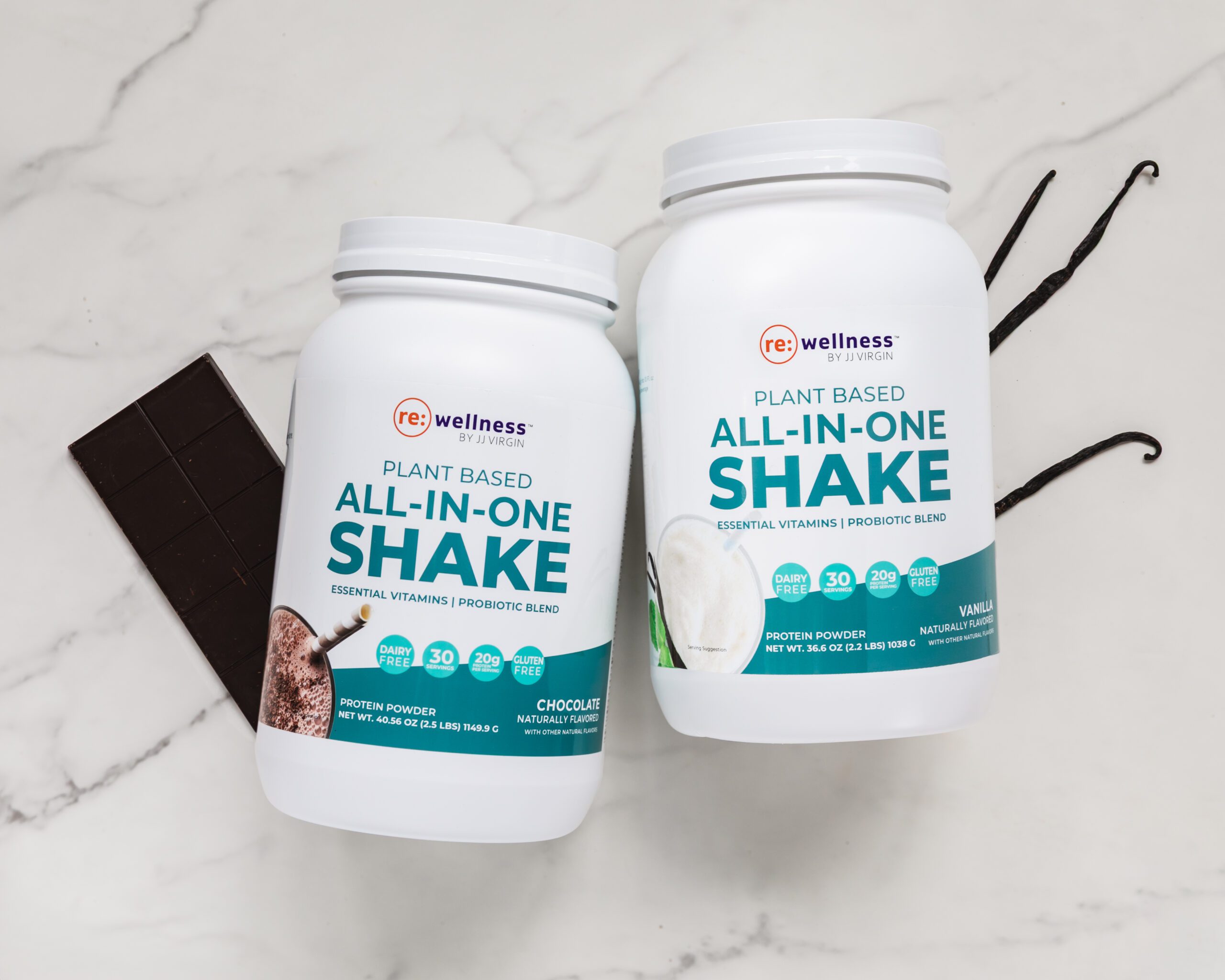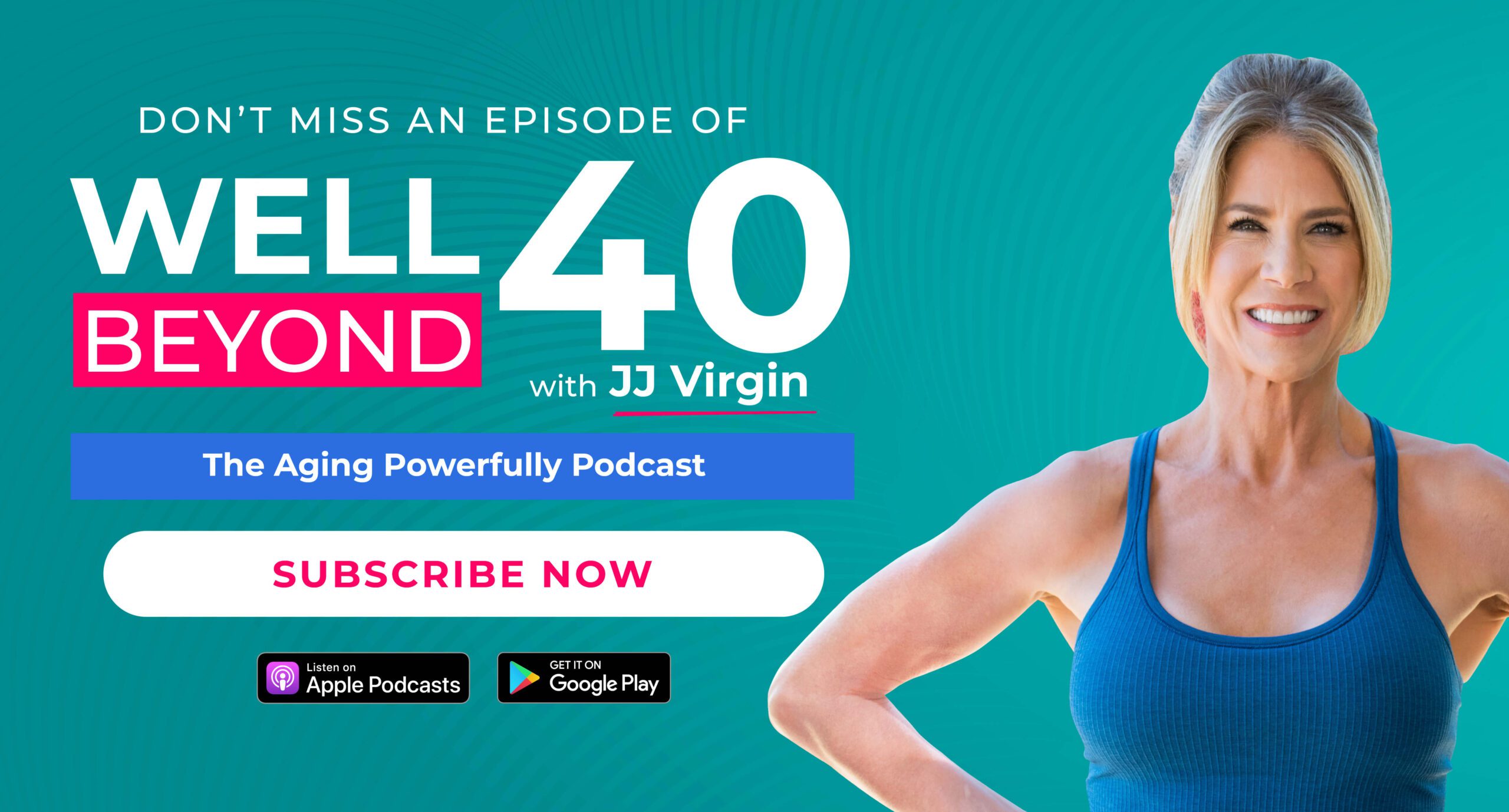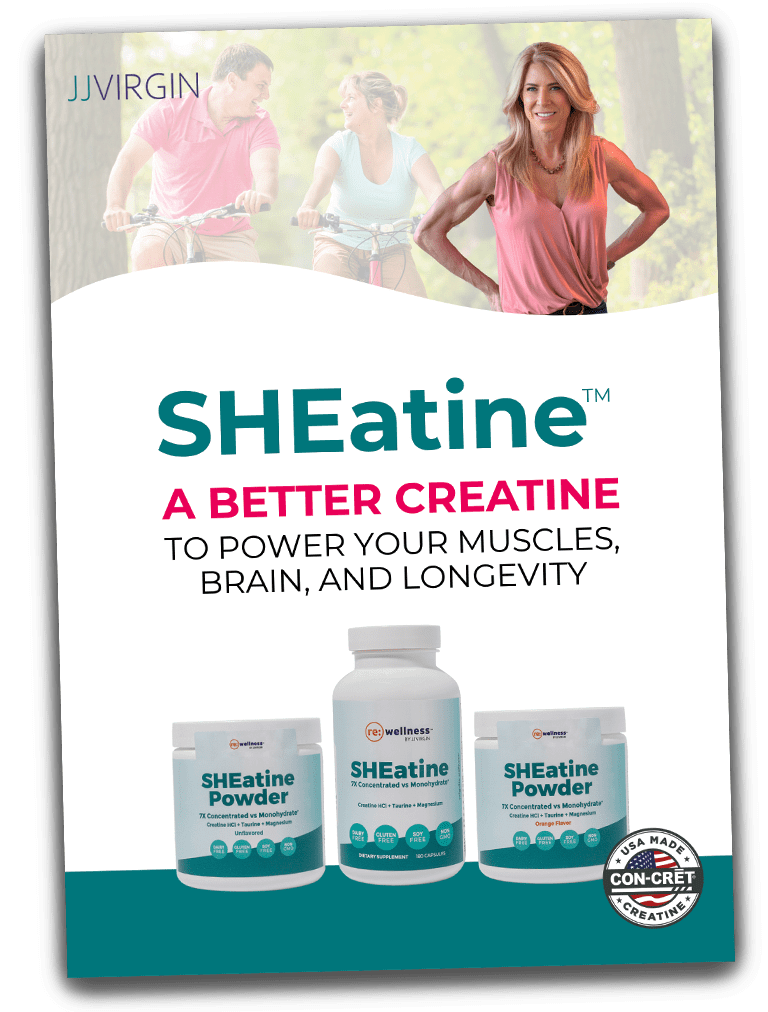Here’s a fun fact: starting each day with a loaded smoothie has been the #1 needle-mover for hundreds of thousands of people on The Virgin Diet and Sugar Impact Diet.
Ready in as little as 5 minutes, loaded smoothies are the easiest and yummiest way to upgrade your health to look and feel your very best—fast!
Beyond the consistent weight-loss benefits, I’m a big fan of smoothies because you can easily sneak in a generous serving of veggies, plus add plenty of fiber. Loaded smoothies are also easily digestible for optimal energy and focus, and they make a great post-workout recovery drink to boost fat-burning and muscle repair.
And with so many tasty recipe options, you’ll never get bored with the endless flavor combinations!
Need some yummy ideas? I’ve got over 60 recipes in my Loaded Smoothie Cookbook. It’s FREE… and guaranteed to be a game-changer for fat loss and overall health.
Of course, there are skeptics who argue that smoothies are not a “real food” source, have inflammatory ingredients, or are a quick-fix diet scheme that leaves you hungry soon after your last sip.
All of these concerns are actually valid for the majority of smoothies on the market. Luckily, I’ve done the research for you so you don’t have to worry about these common pitfalls!
How to Make the Best Loaded Smoothie
The key to a healthy meal-replacement drink is a trifecta of clean, lean protein, healthy fats, and plenty of fiber. Add the right liquids with a healthy dose of fresh produce, and you’re all set with a complete, satisfying meal!
1. Choose the Ideal Protein Powder
If you’ve ever had a sugar crash an hour after your morning smoothie, that’s a surefire sign there wasn’t enough protein in your smoothie!
Every loaded smoothie should contain 30+ grams of protein for sustained energy until your next meal.
My All-In-One Shakes have been carefully formulated to achieve the best health benefits and are an excellent value. But if you’re not able to get the shakes that I offer in my online store, here are some guidelines to help you identify the best protein powders:
- If you’re looking for a vegan source of protein, make sure it contains all nine essential amino acids. Preferred protein sources are pea, chia, chlorella, or brown rice.
- If you’re interested in a paleo protein source, look for defatted beef protein with branched-chain amino acids. Also, be sure the cows are grass-fed, hormone-free, and never given GMO feed—remember, you are what you eat ate!
- Avoid soy, egg, or dairy (including whey) protein powders. They cause inflammation that can cause skin breakouts, headaches, joint pain, fatigue, and even weight gain.
- Don’t use protein powder that sneaks in unhealthy ingredients. Common ingredients to avoid include maltodextrin (corn), fructose and other sugars, excessive sugar alcohols, and artificial sweeteners. If you spot any of these ingredients, leave that product on the shelf!
- Choose a protein powder that’s low-sugar impact. Always check labels to make sure the added sugar content is 5 grams or less.
2. Add Fiber
If your stomach starts growling soon after the last sip of your morning smoothie, it’s time to increase the fiber!
Fiber not only helps you feel full and burn fat, it’s also great for managing your blood-sugar and cholesterol levels. You’ll also prevent heart disease and type 2 diabetes by adding fiber to your loaded smoothie. Who doesn’t want that?
Some great sources of fiber you can use include:
- Freshly ground flaxseed
- Chia seeds
- Cacao nibs
- Avocado
- Extra Fiber
- Organic berries, peaches, cherries, or apples
- Leafy greens
3. Add Healthy Fats to Stay Lean
Contrary to what we were told in the 1980s, in order to burn fat, you have to eat fat!
Healthy fats, that is! The truth is that eating low-fat or no-fat signals your body to hang on to the fat you already have, especially around your middle.
That’s obviously not your goal, so don’t be afraid to add a healthy serving of fat into your smoothies. Your waistline with thank you for it!
Healthy fat sources include:
- Coconut oil or coconut butter
- Nut or seed butters (Never peanut butter)
- Unsweetened coconut, almond, cashew, oat, or other plant-based milk (read ingredients for things like inflammatory oils)
- Unsweetened coconut or other plant-based yogurts
4. Load Up On Low-Sugar Fruits & Veggies
The key to a healthy smoothie is the right balance of organic fruits and veggies, for an extra dose of antioxidants, fiber, and nutrients.
Focus on low-sugar impact fruits, and limit it to one cup of fruit per smoothie. Then add in a cup of fresh greens—you’ll never even notice that kale or spinach with all the other delicious ingredients in your smoothie.
The best organic fruits and veggies to add to your smoothie include:
- Blueberries
- Raspberries
- Strawberries
- Cherries
- Spinach
- Kale
- Chard
- Apple
- Pumpkin
- Butternut squash
5. Top It Off With Healthy, Dairy-Free Liquid
Dairy is one of the most common culprits for food sensitivities, causing weight gain, skin problems, and gas and bloating. So ditch the dairy if you want to get rid of these symptoms, and opt for full-fat, dairy-free liquids for the healthiest protein smoothies.
But don’t reach for the juice! A cup of apple juice has more sugar than a cup of cola and zero fiber. All that fructose can wreak havoc with your weight and your health.
My favorite forms of liquid to add to smoothies include:
- Unsweetened almond milk
- Unsweetened coconut milk
- Unsweetened cashew milk
- Unsweetened oat milk
Heads up: Whatever type of liquid you choose, read those ingredients for nasty oils and other undesirable ingredients!
Finally, with your smoothies (or any meal of the day), remember to avoid other ingredients likely to cause food intolerances (such as gluten, soy, dairy, eggs, corn, and peanuts), as well as anything artificial or high-sugar impact.
There you have it! When you follow these five easy steps, you’re guaranteed to have a loaded smoothie that gives your body exactly what you need to look and feel your best.

The views in this blog by JJ Virgin should never be used as a substitute for professional medical advice. Please work with a healthcare practitioner concerning any medical problem or concern. The information here is not intended to diagnose, treat, or prevent any disease or condition. Statements contained here have not been evaluated by the Food and Drug Administration.







